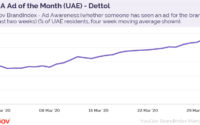Are NFTs The New Gold?
Throughout history we’ve used valuable materials like Gold as a medium of exchange. Being a scarce material, its value constantly rose over the decades; it was used in temples for various religious practices and as jewelry and had proven itself a hedge against unpredictability. But, as years progressed and technology advanced, the way we valued things shifted; we went from carrying around blocks of precious gold to exchanging fiat money which involved putting in faith and credit in authoritative systems like central banks and governments, and then we moved on to digital currencies and sales platforms: a technology that some people think may revolutionize the society.
Currency is fungible; it can be replaced. Five $1 bills can be exchanged for a single $5 bill. The value of the money would still be $5 regardless of what form it is in. Non-fungible assets are the opposite: they cannot be replaced. Each asset is unique and hence can’t be easily substituted for something similar. For example, The Mona Lisa, which is an original piece of art and can’t be swapped out for a Mona Lisa poster from the Louvre gift shop, because the poster would not hold the same value. A NFT stands for non-fungible token and acts like a digital certificate of authenticity. The idea behind NFTs is that you have a digital signature in the way that a great work of art might bear the signature of its creator. This is done by means of the digitally decentralized blockchain technology which involves programmatically verifying and recording information in a chain of blocks across a global network of computer systems. Blockchains assign property rights to digital assets through unique code systems. NFTs are essentially a form of cryptocurrencies, but unlike fungible cryptocurrencies like Bitcoin, they are completely unique. They exist as a string of numbers and letters stored on a blockchain ledger. This information can contain who owns the digital asset, who sold it, and when it was sold. It is also encrypted, ensuring the NFTs’ authenticity and scarcity, allowing digital creators and artists to make their creations scarce and therefore more valuable which helps drive up prices and enhance the digital economy.
The digital collectible game Cryptokitties which emerged in 2017, allowed users to buy, trade, and breed digital cat collectibles. Each new cat was a NFT which certified its originality and ownership. Since then, NFTs have been applied to videogames, digital art, and sports mementos. The NBA Top Shot allows users to procure a collection of digital basketball highlights that have become part of a big business, selling over $338 million in sales. Beeple is a 3D American digital artist who’d been doing one render every day for 13 years. He recently put 5000 of his artworks in a grid as an art piece, calling it “Everydays—The First 5000 Days” and sold it to Christie’s, which is traditionally a private auction house for rich people to bet on things that will go up in value. He sold his digitally constructed grid as an NFT for $69 million. Selling digital artwork in this manner would not have been possible back in the days, however non-fungible tokens completely changed the game.
The market for NFTs ballooned in 2020, climbing to a market cap of at least $338 million from about $41 million in 2018. NFTs have become more mainstream and permeated the online digital world, sweeping the globe. Anything and everything can be an NFT! Lindsay Lohan has an NFT, Logan Paul has an NFT, Soldier Boy has an NFT and even Jack Dorsey sold his tweet “just setting up my twttr” as an NFT for $2.9 million! The GIF of a rainbow casting Nyan Cat which is part cat and part Pop-Tart was a viral meme back in 2011. In February 2021, the GIF became pervasive around the internet and was sold as an NFT at an online auction for 300 ether which is the cryptocurrency that powers the Etherium network. At that time, this would have been equivalent to at least $600,000! With the growth of NFTs, multiple “minters” have been given rise to such as Rarible and OpenSea which are essentially blockchain marketing platforms where NFTs are sold and bought using cryptocurrency, fortifying the digital economy.
Not all NFTs however, verify that the person selling a digital art piece is actually the original creator in online marketplaces. Some people view NFTs as an outstanding strategic investment, but some view them as an optimistic gamble, being skeptical that ownership alone makes the digital assets valuable. When it comes to digital art, a buyer owns the original digital painting, but the person can’t keep others from copying that image multiple times and sharing or changing it online and because users in blockchain platforms are anonymous, it becomes difficult to enforce against any right. This raises concern among people regarding the efficiency of NFTs and the future they hold. Nevertheless, professionals are working towards making NFTs more secure and are giving people the opportunity to appeal suspected copyright infringement on various digital sales platforms.
Back in the days, Gold used to be mined and traded to people; its value was based on supply and demand, and it was a tangible product unlike NFTs. The US Dollar being removed from the Gold Standard completely transformed the monetary policies of the whole world, basing them purely on trust; governments claimed that a piece of printed paper had value and people simply believed it to be true, changing the way value was perceived. Eventually, currencies began to form, and the exchange of money became centralized, but this changed when cryptocurrencies were created. Money that previously flowed in Gold began flowing into digital assets like NFTs and more people started putting their faith and confidence into these private currencies and tokens. The exceptional growth in the popularity of NFTs has generated a lot of scopes for the world’s economy to flourish and enhanced financial success and given the new generation access to digital objects dubbed “the new Gold” because they are as scarce, transparent, and substantial as Gold, in fact some people even consider them more rewarding than Gold. In the future, NFTs are set to play a significant role in the world’s financial system. They could be used for concert tickets, lottery applications, proof of ownership over limited edition offerings, and much more! The employment of NFTs can improve the performance of industries like electronics, healthcare, agriculture, etc. augmenting innovation and stability worldwide.
For more insights on this topic, register to attend the webinar, ‘Is your brand future-sensing the Web 3.0, Meta, and NFT’s? on 25 January 2022.








 Email: info@cyber-gear.com
Email: info@cyber-gear.com